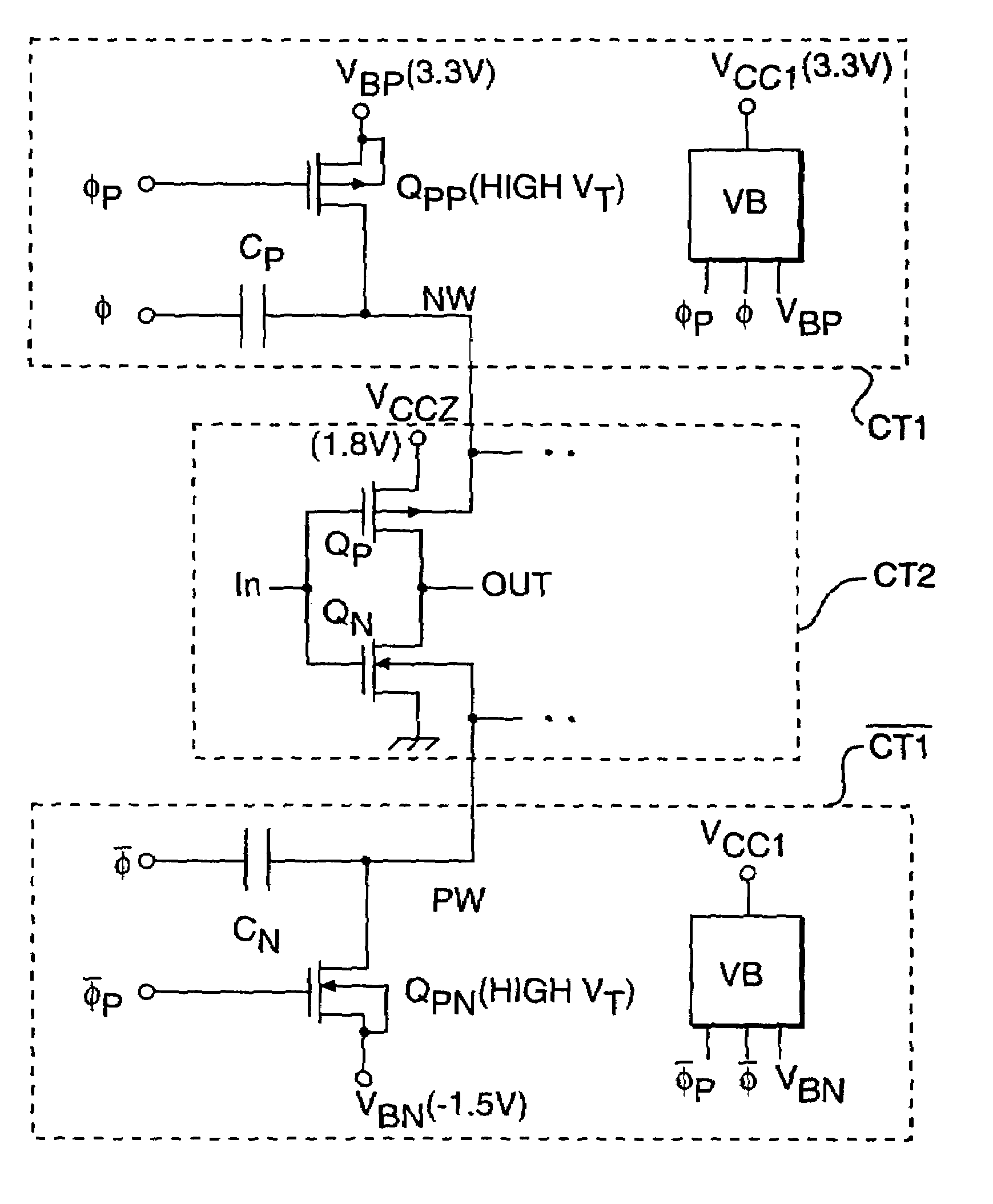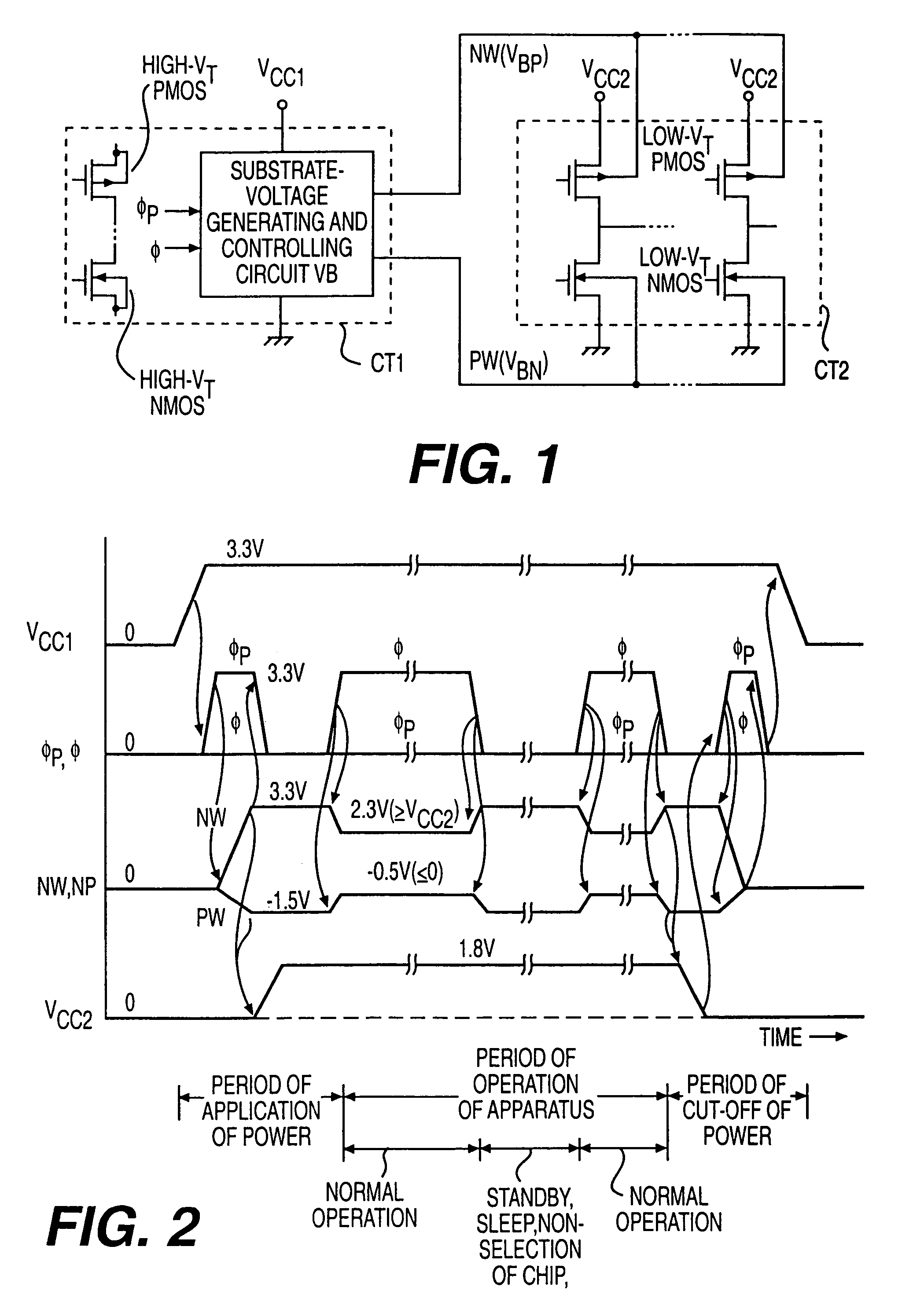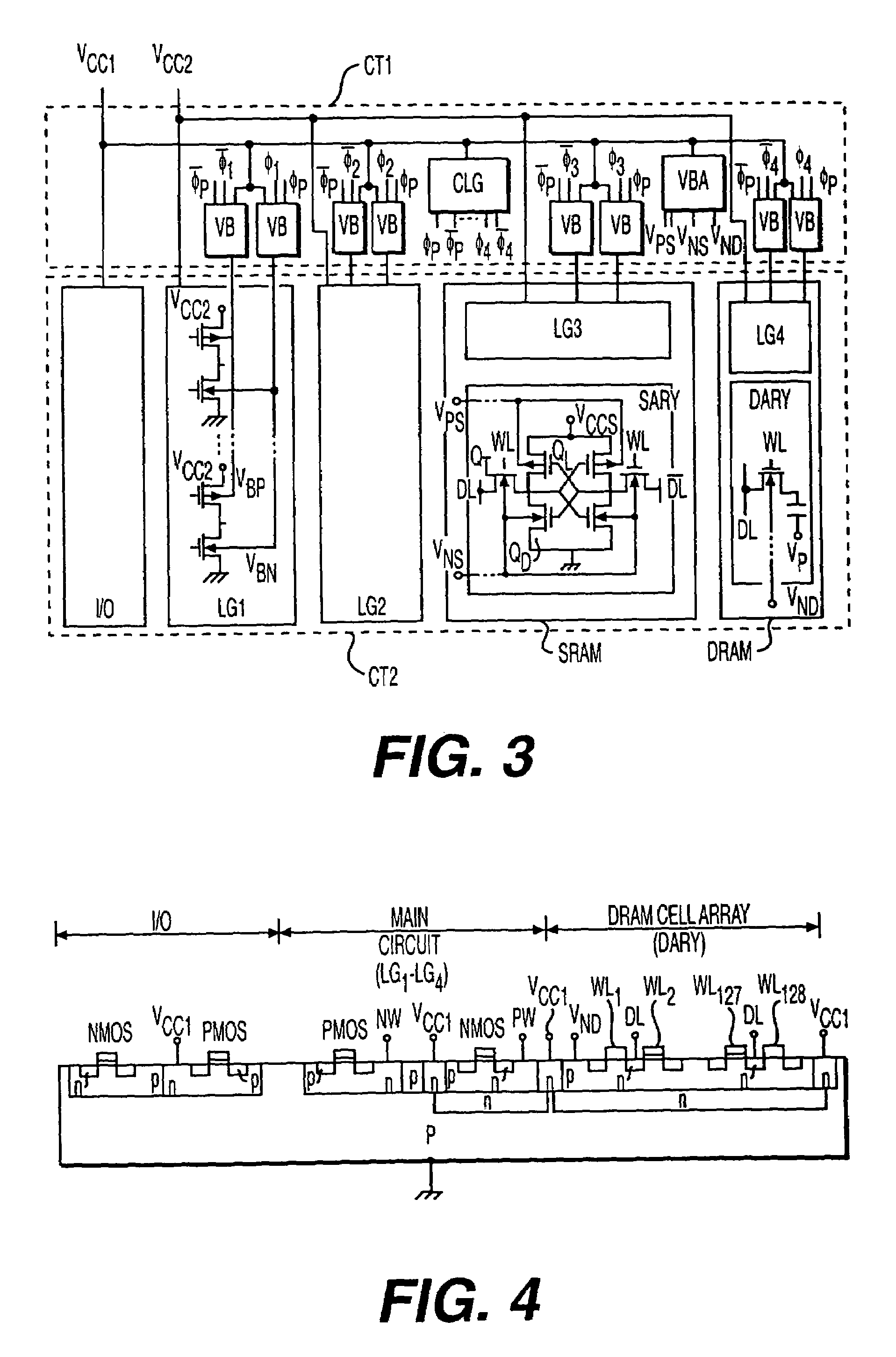Semiconductor device
- Summary
- Abstract
- Description
- Claims
- Application Information
AI Technical Summary
Benefits of technology
Problems solved by technology
Method used
Image
Examples
Embodiment Construction
[0062]In the preferred embodiment illustrated in FIG. 1, a circuit block CT1 operating with a high supply voltage VCC1 (e.g., 3.3 V) employs MOSFETs each having a selectable threshold voltage VT as high as 0.5 V, for example, during operation. Since the supply (operating) voltage is sufficiently high, high-speed operation is possible without dropping the threshold voltage to 0.1 V or thereabouts. Therefore, any subthreshold current that exists is sufficiently small to be ignored, without especially switching the threshold voltage during normal operation to the standby voltage, whereby the source of the transistor and its substrate can be connected at a common voltage.
[0063]FIG. 1 also shows a substrate voltage generating and control circuit VB, which is operated with control signals φP, φ.
[0064]A circuit block CT2 operating with a low supply voltage VCC2 (e.g., 1.8 V), on the other hand, has internal transistors that are operated at high speed by dropping their threshold voltage to,...
PUM
 Login to View More
Login to View More Abstract
Description
Claims
Application Information
 Login to View More
Login to View More - R&D
- Intellectual Property
- Life Sciences
- Materials
- Tech Scout
- Unparalleled Data Quality
- Higher Quality Content
- 60% Fewer Hallucinations
Browse by: Latest US Patents, China's latest patents, Technical Efficacy Thesaurus, Application Domain, Technology Topic, Popular Technical Reports.
© 2025 PatSnap. All rights reserved.Legal|Privacy policy|Modern Slavery Act Transparency Statement|Sitemap|About US| Contact US: help@patsnap.com



